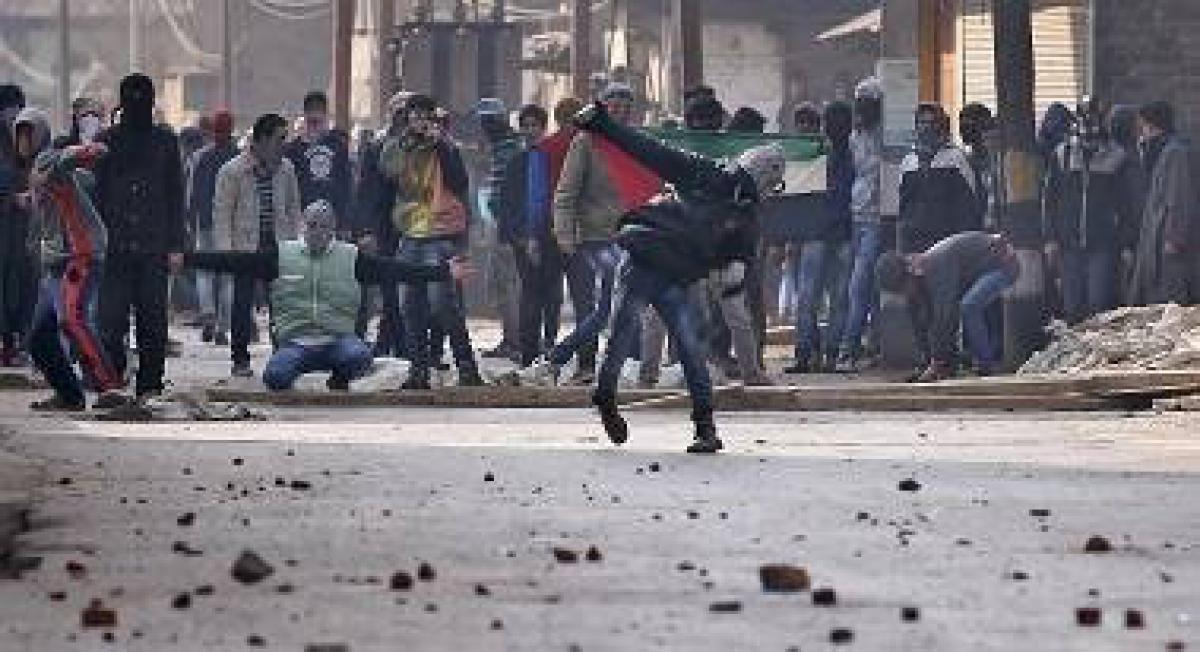Live
- Demand to release fee reimbursement dues
- Millet sisters take part in a host of programmes
- National conference on digital change begins at SU
- Mathematics plays key role in different fields
- Plaint filed against FRO for obstructing MGNREGA works
- Two students drown
- Udandapur Reservoir oustees assured of fair rehabilitation package
- IPS officers’ suspension extended for six months
- Endowments officials inspect Jogulamba temple amid allegation of mismanagement
- ‘Pending bills for village panchayats must be cleared immediately: Sarpanches

Has the death of Hizbul commander Burhan Wani acted only as the trigger to set off the kind of widespread violence Kashmir hasn\'t seen for many years?
Has the death of Hizbul commander Burhan Wani acted only as the trigger to set off the kind of widespread violence Kashmir hasn't seen for many years?
If the answer is Yes, then why does Kashmir become the victim of cyclic violence that often devours its own children without making any material difference to the overall ground realities here?
The answers to these questions are not easy to find unless we accept the basic reality that despite cosmetic efforts to win hearts and minds since insurgent violence started here in 1990s, nothing much has changed on the ground.
If it had been the rigging of the 1987 elections by the then state government headed by National Conference (NC) patron Farooq Abdullah that triggered an armed insurgency, why and how do people continue to hit streets to attack the security forces and invite pellets and bullets 29 years hence?
The separatist leadership definitely becomes more relevant each time Kashmir explodes with anti-India protests, but assuming that the separatist call all the shots here would be flawed logic.
Violence cannot be calibrated and delivered in measured volumes. It spirals out of control each time it gets a trigger to begin.
In the summer unrest of 2010, 112 protesters, almost all youths, were killed in clashes when unruly mobs resorted to large-scale violence, including stone pelting, burning public property and lynching local policemen.
The present current cycle of violence that started on Saturday has claimed 36 lives.
Over 1,000 people, including civilian protesters and security personnel, have been injured.
Nearly 100 injured civilians, including a girl, face the horrifying prospect of losing their eyesight -- either completely or partially.
Police stations have been torched, weapons have been looted and the authority of the administration has been trashed in its face.
Once again after 2010, it appears we might be back to where we started in the early 1990s.
Mainstream politicians are still engaged in a game of political brinkmanship.
The NC's Omar Abdullah does not lose a minute to tweet who died in the latest firing incident and the ruling PDP continues blaming the NC for sowing the seeds of discontent, whose fruit the present government is doomed to harvest.
Mainstream and separatist politicians are acting in a manner that gives one an impression that Kashmir is a chess board on which the pawns (read the public) are expendable foot soldiers.
While mainstream politicians must immediately stop chiding and ridiculing each other for who was responsible for 2010 mayhem and who is responsible for its possible repeat in 2016, the separatists need to take an even closer look at their strategy.
If it is the future of Kashmir the separatists are worried about, then the first step towards realising that dream is to help end the ongoing cycle of violence.
What use is a bright tomorrow for Kashmir when it's most valued asset, the youth keep on dying today?
Burhan Wani was a 22-year old youth who died fighting the security forces after becoming a militant.
If another 36 youths have to follow Wani to the grave because violence must be sustained, then whose war was Wani fighting?

© 2025 Hyderabad Media House Limited/The Hans India. All rights reserved. Powered by hocalwire.com







